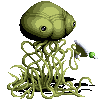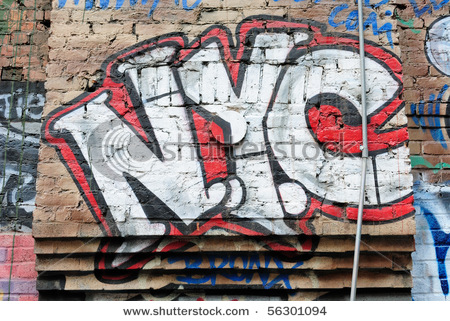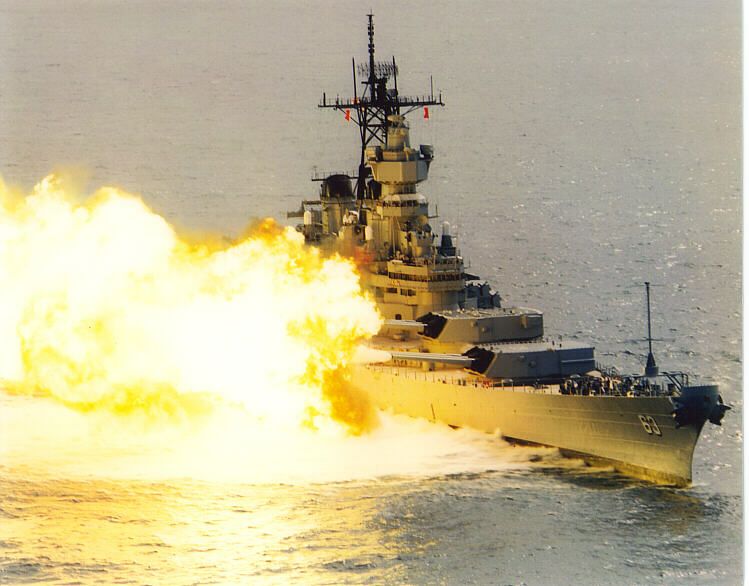|
|


-
Item Abuse/Re-work of some items
07. 15. 2011 16:24

COAESystems
|
2 main concerns for me are:
Smokes - can be implemented better than this
PHH - still left as OP item even for surface to surface
1. Smoke use. Smokes should be either a) used once per battle or b) once every 5 minutes at least. All game modes, especially Harbour Assault, suffer from almost unlimited smoke use. Smokes should be
a tactical item, not a spam item.
2. Sub use of smoke. This is not a problem for lower subs, only SS3 and SS4. A sub can remain hidden forever with diving and smoke, provided the planesman has high ability. Subs should not be able to fire smoke.
PHH - Just get rid of it entirely. It's a laugh I agree, but is just so easy to use. I've killed BB with my SN CV4 full of HH, not kill steals actually full out sinking, with level 76 gunners only. With 120 gunners on PCA, bingo you have
a ship that can kill anything. For Anti Sub, just 4 R slots are enough to kill any sub with PHH.
|
-
Re : Item Abuse/Re-work of some items
07. 15. 2011 19:43

Nachovsky
|
Smokes and SSs can both have the same solution. If u increase smoke rld to 5mins automatically SSs can just surface once, the second they dont have more smoke :)
|
-
Re : Item Abuse/Re-work of some items
07. 15. 2011 20:57

Piombo
|
grammar whats that never learned that
|
-
Re : Item Abuse/Re-work of some items
07. 15. 2011 21:04

ixixi
|
surface damage for HH shouldn't be that much.....
|
-
Re : Item Abuse/Re-work of some items
07. 15. 2011 21:14

NewYorkBoy
|
I don't care about PHH but that smoke it kills the game..i knw its a game but isnt it base 70% on RL..So i don't see where Smoke was used in the war..Just useless and Annoying during HA..
|
-
Re : Item Abuse/Re-work of some items
07. 15. 2011 21:17

Rehor
|
I've changed my mind in the last couple hours.
None of these are greater offenses than bestrl in a CV.
|
-
Re : Item Abuse/Re-work of some items
07. 15. 2011 22:08

Spagz
|
Originally Posted by NewYorkBoy
I don't care about PHH but that smoke it kills the game..i knw its a game but isnt it base 70% on RL..So i don't see where Smoke was used in the war..Just useless and Annoying during HA..
Uhhh...Yeah destroyers and some light cruisers often laid smoke screens for battleship/carrier battlegroups during WW2. It was a very common practice and tactic to lay smoke to obscure sight for gunfire and make it difficult to divebomb or torpbomb ships.
|
-
Re : Item Abuse/Re-work of some items
07. 15. 2011 22:30

Piombo
|
Originally Posted by Spagz
Originally Posted by NewYorkBoy
I don't care about PHH but that smoke it kills the game..i knw its a game but isnt it base 70% on RL..So i don't see where Smoke was used in the war..Just useless and Annoying during HA..
Uhhh...Yeah destroyers and some light cruisers often laid smoke screens for battleship/carrier battlegroups during WW2. It was a very common practice and tactic to lay smoke to obscure sight for gunfire and make it difficult to divebomb or torpbomb ships.
all ships in WWII were capable at smoke screen all they did was burn oil aft of ship and trail smoke and make zig zag pattern to disguise movement to avoid being sunk by other surface ships Wiki link- Smoke generators Very large or sustained smoke screens are produced by a smoke generator. This machine heats a volatile material (typically oil or an oil based mixture) to evaporate it, then mixes the vapor with cool external air at a controlled rate so it condenses to a mist with a controlled droplet size. Cruder designs simply boiled waste oil over a heater, while more sophisticated ones sprayed a specially formulated oily composition ("fog oil") through nozzles onto a heated plate. Choice of a suitable oil, and careful control of cooling rate, can produce droplet sizes close to the ideal size for Mie scattering of visible light. This produces a very effective obscuration per weight of material used. This screen can then be sustained as long as the generator is supplied with oil, and?especially if a number of generators are used?the screen can build up to a considerable size. One 50 gallon drum of fog oil can obscure 60 miles (97 km) of land in 15 minutes. Whilst producing very large amounts of smoke relatively cheaply, these generators have a number of disadvantages. They are much slower to respond than pyrotechnic sources, and require a valuable piece of equipment to be sited at the point of emission of the smoke. They are also relatively heavy and not readily portable, which is a significant problem if the wind shifts. To overcome this latter problem they may be used in fixed posts widely dispersed over the battlefield, or else mounted on specially adapted vehicles. An example of the latter is the M56 Coyote generator. Many armoured fighting vehicles can create smoke screens in a similar way, generally by injecting diesel fuel onto the hot exhaust. [edit] Naval methods Warships have sometimes used a simple variation of the smoke generator, by injecting fuel oil directly into the smoke stack. They also use large floating smoke canisters, known as smoke buoys. In the past they have also used sprays of chemicals that fume on contact with air, such as titanium tetrachloride.[1] Smoke screens were used during the Battle of Jutland in World War I. In the Battle of the River Plate in World War II, the German pocket battleship Admiral Graf Spee used a smoke screen to escape from the British cruisers. In the Second Battle of the Atlantic in World War II, smoke screens were used by Allied destroyer escorts to mask the presence of the merchant ships from German U-boats. At the Battle off Samar in October 1944, Taffy Three, the American Escort Carrier task unit, the escorts laid a smoke screen to allow the carriers to escape, and add to the general confusion.
|

-
Re : Item Abuse/Re-work of some items
07. 15. 2011 22:56

Piombo
|
Wiki Hedge Hog ASW weapon -A host of new anti-submarine weapons were developed. Forward-throwing anti-submarine mortars were introduced in 1942 to prevent loss of sonar contact. These mortars, the first being Hedgehog fired a pattern of small depth charges. One type of charge was used to create entire patterns of explosions underwater around a potential enemy, while the second type was of round was fitted with contact detonators, meaning the warhead exploded only upon contact with the submarine. A later design enabled a pursuing destroyer or destroyer escort to maintain continual sonar contact until a definite 'hit' was achieved. Additionally, new weapons were designed for use by aircraft, rapidly increasing their importance in fighting submarines. The development of the FIDO (Mk 24 mine) anti-submarine homing torpedo in 1943 (which could be dropped from aircraft) was a significant contributor to the rising number of German sub sinkings.
The Hedgehog (also known as an Anti-Submarine Projector) was an anti-submarine weapon developed by the Royal Navy during World War II, that was deployed on convoy escort warships such as destroyers to supplement the depth charge. The weapon worked by firing a number of small spigot mortar bombs from spiked fittings. Rather than working on a time or depth fuse like depth charges, the bombs exploded on contact and achieved a higher sinking rate against submarines than depth charges did.
The Hedgehog received its name because when unloaded, the rows of empty spigots resembled the spines of a hedgehog.
It was developed by the Directorate of Miscellaneous Weapons Development based on the British Army's Blacker Bombard and entered service in 1942.[1]
Hedgehog was replaced in new construction for the Royal Navy by the Squid mortar in 1943. Squid was in turn replaced by the three-barreled Limbo. The United States produced a rocket version of Hedgehog called Mousetrap. The United States developed Weapon Alpha as a replacement for Hedgehog and Mousetrap. Hedgehog remained in service with the United States Navy into the cold war until both Hedgehog and the less satisfactory Weapon Alpha were replaced by ASROC.[2]
The Hedgehog was adapted into a 7 shot launcher form for use on the back of the Matilda tank serving with Australian forces.
From 1949, a copy of Hedgehog was produced in the USSR as MBU-200, developed in 1956 into MBU-600 with enhanced range of 600 m
Technically the weapon was a multiple 'spigot mortar' or spigot discharger, a type of weapon developed in the interwar period by Lt-Col Blacker, RA. The spigot mortar was based on early infantry trench mortars. By using a spigot, the warhead and barrel size were no longer dependent in the design. The propelling charge was part of the main weapon and worked against a rod (the spigot) set in the baseplate which fitted inside a tubular tail of the 'bomb'. This principle was first used on the Blacker Bombard and the later PIAT anti-tank weapon.
The adaptation of the bombard for naval use was made in partnership with MIR(c) under Major Millis Jefferis who had taken Blacker's design and brought it into use with Army. The weapon fires a salvo of 24 bombs in an arc, aimed to land in a circular or elliptical area about 100 feet (30 m) in diameter at a fixed point about 250 yards (230 m) directly ahead of the attacking ship. The mounting initially was fixed but was later replaced by a gyro-stabilised one to allow for the rolling and pitching of the attacking ship.
The launcher had 4 "cradles", each with 6 launcher spigots. The firing sequence was staggered so all the bombs would land at about the same time. This had the added advantage of minimising the stress on the weapon's mounting, so that deck reinforcement was not needed, and the weapon could easily be retrofitted to any convenient place on a ship. Reloading took about 3 minutes.
The Hedgehog had four key advantages over the depth charge:
An unsuccessful attack does not hide the submarine from sonar.
When a depth charge explodes it can take 15 minutes before the disturbance can settle down enough that sonar becomes effective. Many submarines escaped during the time after an unsuccessful depth charge attack. Since Hedgehog charges only explode on contact, if they miss, the submarine can still be tracked by sonar.
The depth of the target does not need to be known.
Proximity weapons (such as depth charges) need to be set for the target's correct depth to be effective. Contact fused charges don't have that limitation. In addition, any explosion indicates a 'hit'.
The weapon gives no warning of the attack.
Until depth-finding sonar became available (the first was the Royal Navy's 'Q' attachment in 1943), there was a 'dead period' during the final moments of the attack when the attacker had no knowledge of what the target was doing. U-boat commanders became adept at sharp changes of direction and speed at these moments, thus making the attack less accurate. Ahead-thrown weapons such as Hedgehog did not give the target the necessary warning of when to dodge.
A direct hit by 1 or 2 Hedgehog bombs was usually sufficient to sink a submarine.
Many depth charges were required in order to inflict enough cumulative damage to sink a submarine; even then, many U-boats survived hundreds of detonations over a period of many hours?678 depth charges were dropped against U 427 in April 1945. The depth charge, usually exploding at a distance from the submarine, had a cushion of water between it and the target which rapidly dissipated the explosive shock. The Hedgehog's contact charge, on the other hand, had the cushion on the other side, actually increasing the explosive shock. However near-misses with the Hedgehog did not cause cumulative damage as depth charges did; nor did it have the same psychological effect as a depth charge attack.
The Hedgehog became much more successful than depth-charge attacks (the best kill rate was about 25% of attacks whereas depth charges never achieved more than 7%). It initially had a very poor record, although many of the factors had nothing to do with the design of the weapon[citation needed]. USS England sank six Japanese submarines in a matter of days with Hedgehog in May 1944.
P.S. states that it was a contact weapon . so in real life theory could be used against surface ships.
|

-
Re : Item Abuse/Re-work of some items
07. 15. 2011 23:11

ljsevern
|
I agree with Coae.
And Piombo being utterly wrong as usual. RL=/=Balance.
|
-
Re : Item Abuse/Re-work of some items
07. 15. 2011 23:47

danita
|
If Piombo thinks smoke should stay as is cause they used it a lot in RL as well ( according to him), then I want my Fire control radar back and see right through that very same smoke.
|
|
|